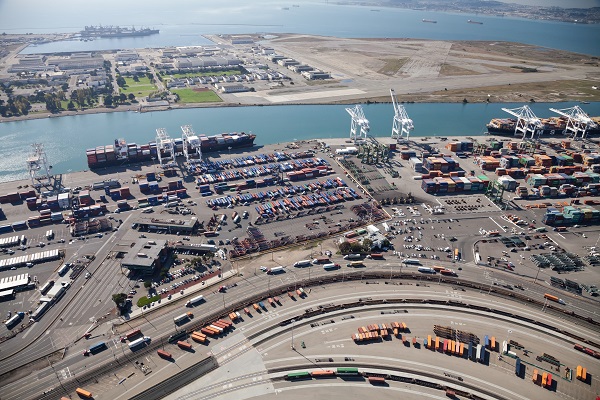
While the South Coast Air Quality Management District’s plan to reduce smog was approved at the beginning of March, another proposal to reduce pollution from ports and warehouses was rejected. In approving tougher restrictions, air quality officials have taken a significant step toward cutting emissions to comply with national health standards in what is known as the country’s smoggiest region. But the absence of pollution legislation that targets ports, warehouses and rail yards means that the state will have to count on voluntary actions by these entities to participate in emissions reduction initiatives.
Regulators have been criticized for failing to pass mandatory standards for the freight industry. Ports and warehouses are significant contributors to harmful emissions. Rather than compulsory targets, the facilities that house large numbers of ships and trucks will be expected to cooperate by setting their own pollution reduction targets and measures. If the facilities do not develop adequate policies within one year, then the air district will consider implementing rules.
The freight industry has a long history of opposing locally imposed pollution regulations because, they argue, such measures restrict job growth in a massive job industry. Environmentalists have historically targeted this source of emissions pollution because of the massive effect it has on the quality of the environment. Diesel trucks are the leading source of nitrogen oxide in the region. Thus, while the Los Angeles-Long Beach port has implemented regulations to reduce emissions over the past ten years, it is still the largest air pollution source in the region.
In order to comply with federal standards, the region would need to reduce nitrogen dioxide gases by 45% by 2023 and an additional 10% by 2031. These kinds of reductions exceed regulations that are already in place to reduce ozone gases. A look at the South Coast basin’s ozone levels emphasizes the stark realities plaguing this region; it has the highest ozone pollution in the country and still does not conform to federal heath guidelines dating back to 1979.
The approved plan is expected to cost around $16 billion. This price tag is especially worrisome to many supporters given the current administration’s intention to ease or eliminate environmental regulations.
Contact Shane Coons at 949-333-0900 or visit his website at www.ShaneCoonsLaw.com to find out more about his practice.
